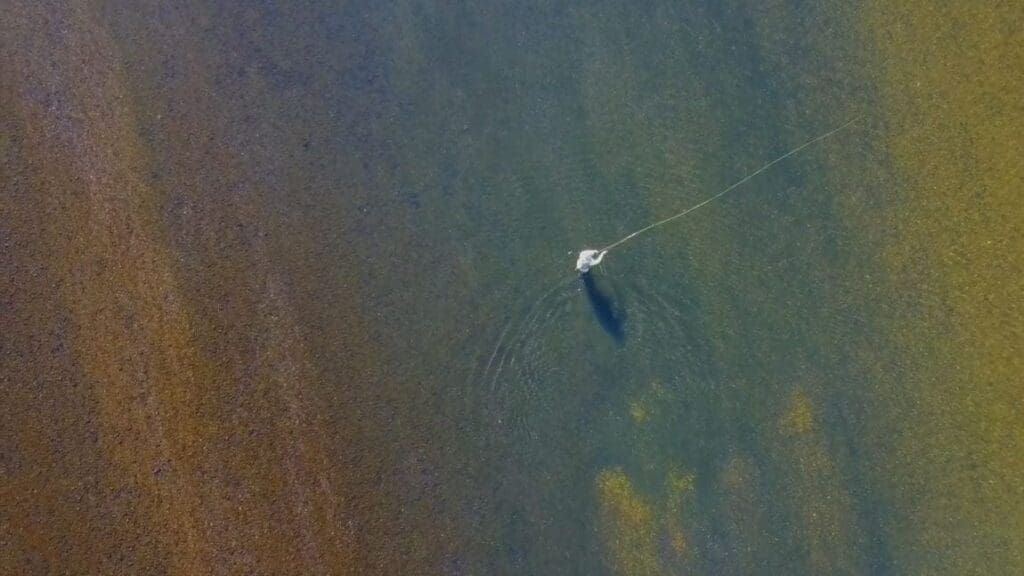I have been “practicing” euro nymphing the past year with mixed results. It is an excellent way to catch fish and I found it useful in certain situations but not all. When euro nymphing you are using super long leaders (15 -25ft) and a “sighter” vice an indicator. My sighter is two feet long and made of backing with orange and black stripes. My rod is longer than normal at 10 feet. Some like an 11-foot rod even better. But even more important is the weight of the rod, with most euro nymphing rods being 2-4 wt rods. The long, smaller wt rod and medium taper provides more “feel” when you are bouncing your flies off the bottom. I use a 10ft, 3wt Redington Hydrogen rod and like it a lot..
The idea behind euro nymphing is to use several heavy flies (using tungsten beads) and fishing them at the bottom of the river where most fish hang out. The heavy flies get you in the zone fast and for a longer time. Using an indicator puts your flies at a specified depth that you decide while using a “sighter” that doesn’t float can put your flies right at the bottom no matter where or when the depth changes. You control the depth by lifting or lowering your rod tip. It is basically high sticking since you can’t make long casts due to the super long leader (remember to cast we need the weight of the line to get our cast out). So, you are “flipping” the heavy flies with the long leader, i.e. using the weight of the flies to position your cast. BTW, euro nymphing line has very little taper and very little weight near the front of the line very different from weight forward lines or double taper lines. Many times, euro nymph fly fishers never get their fly line off their reel.
When euro nymphing you use anywhere from two to three flies separated in several different ways on your long leader. This way you can get your flies to several different depths in the water column. To learn how to set up your leader check out this link – https://news.orvis.com/fly-fishing/how-to-tie-a-euro-nymphing-leader
Most of the flies you use during euro nymphing are tied on a jig style hook with a slotted tungsten bead, although nymph/scud style hooks with wide gaps are also used. Usually the heavier fly is on the bottom to help get all your flies down in the water column quickly. I have found, at times, that I get that bottom fly “stuck” on the bottom. Yes, I have lost a few. If you have found the same problem, losing your bottom fly on the bottom of the river, you may want to try a drop shot technique. Many bass anglers use this technique when spin fishing. Basically, add about 6 inches of tippet to the bend of the hook on your bottom fly and then tie several overhand knots at the end of the tippet. At the end of the 6-inch tippet, above the knots, add some split shot. Now the split shot bounces on the bottom and not your bottom fly – hopefully you won’t lose as many flies this way.
If you are interested in trying this “new way” of fly fishing check out this video
So, when will I pull out my euro nymphing rod? Rivers with pocket water, boulders, riffles, long runs and the like would be a great place. Sounds like most rivers we fish doesn’t it? So maybe you just might want to give euro nymphing a try.

